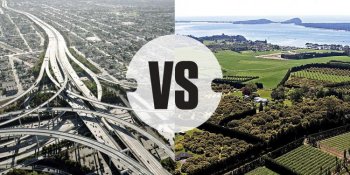
He adds, “This week, we have discovered that there is a section of the population that no longer knows that water is required to grow things.
“It used to be that our milk and vegetables were produced next to our towns, most people had relations on farms somewhere, and everyone knew that milk came from cows and that vegetables were seasonal,” Chapman notes. “Even people living in Auckland could see the town supply farms and, when they went south, the vegetable fields of Pukekohe. Everyone knew the effects of weather on food supply.”
Chapman notes that things are now very different. “Apart from boutique operations, there are no town supply milk farms and Pukekohe is growing more and more houses – you can barely see the fields for the houses. Our population growth has put distance between where we live and where our food grows.
“Urban New Zealand no longer understands what vegetables are available in the various seasons and what effect the weather has on vegetable supply, and although the cities are major polluters of our waterways, urban New Zealand complains about rural-based food production and its environmental effects.
Chapman says,”Horticulture New Zealand recently had a very abrupt reminder about the rural/urban divide and how there is now a lack of understanding about even the basics of what is needed to grow our fruit and vegetables.
"Each year, Horticulture New Zealand makes many submissions to local government councils up and down the country to ensure that New Zealand’s fruit and vegetable growers can continue to provide us with healthy fresh food. This is becoming a tough battle as houses, lifestyle blocks, reverse sensitivity (complaints by new rural dwellers about the activities of rural businesses), and increased regulation constrict our growers’ ability to grow.
"For some, it has come too much. Thankfully, others battle on producing the highest quality produce in the world.
“So when we were recently making submissions to a Council, we should not have been surprised to be asked the following questions:
· Why didn’t we simply grow crops that didn’t need water?
· Why don’t we shift to areas that have reliable water?
· Why can’t veggie growers take a break over dry periods and not plant crops?”
Chapman says that in case there is any doubt, and sadly, it appears there is, here are the short answers:
· Nothing grows or survives without water – not even human beings;
· To grow the volumes required to feed New Zealanders fruit and vegetables every day of the year, fruit and vegetables need to be grown around the country with different areas supplying food at different times. “Please point us to the area that has reliable water”;
· “If fruit and vegetables were not grown over dry periods, what would we eat?”
“So how big is the urban / rural divide – these questions would indicate it is enormous,” Chapman says. “What we’re attempting to do is bridge it.”
Source: HortNZ



 Classifieds
Classifieds

